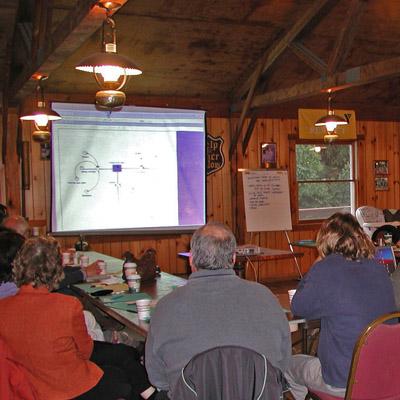Participatory Modeling of Recreation and Tourism in the Northern Forest

Recreation and tourism in the Northern Forest have a long history of contributing to the economy, influencing the culture of local communities, and impacting the natural environment. Although many rural communities are quick to embrace tourism for its perceived economic benefits, there are concerns about negative social and environmental impacts and unfair distribution of economic benefits. An improved understanding of the opportunities and threats associated with rural tourism can help communities design plans that are consistent with their goals and visions for the future.
NSRC researchers combined the diverse perspectives gained through citizen involvement with the analytical tools of computer modeling, called participatory modeling. They conducted participatory modeling workshops in six communities throughout northern New York, Vermont, and New Hampshire. Follow-up workshops were held in New York and Vermont communities. With guidance from experts, participants created computer models that described recreation and tourism issues in their communities. Researchers then combined components of each of the six models to create a general model for Northern Forest communities.
The modeling process had positive community impacts including strengthening relationships, promoting systems thinking, and helping to build consensus among community members. When discussions began, participants were focused on how to increase tourism, but as workshops progressed, community members shifted their focus to the overall welfare of the community. This shift in thinking led to a model representing quality of life as defined by community members. A user-friendly computer model to help Northern Forest communities make informed decisions about tourism development and a step-by-step manual are available. Visit http://www.uvm.edu/tourismresearch/partmodel.htm.
Download printable version [PDF]
Download full final report [PDF]
